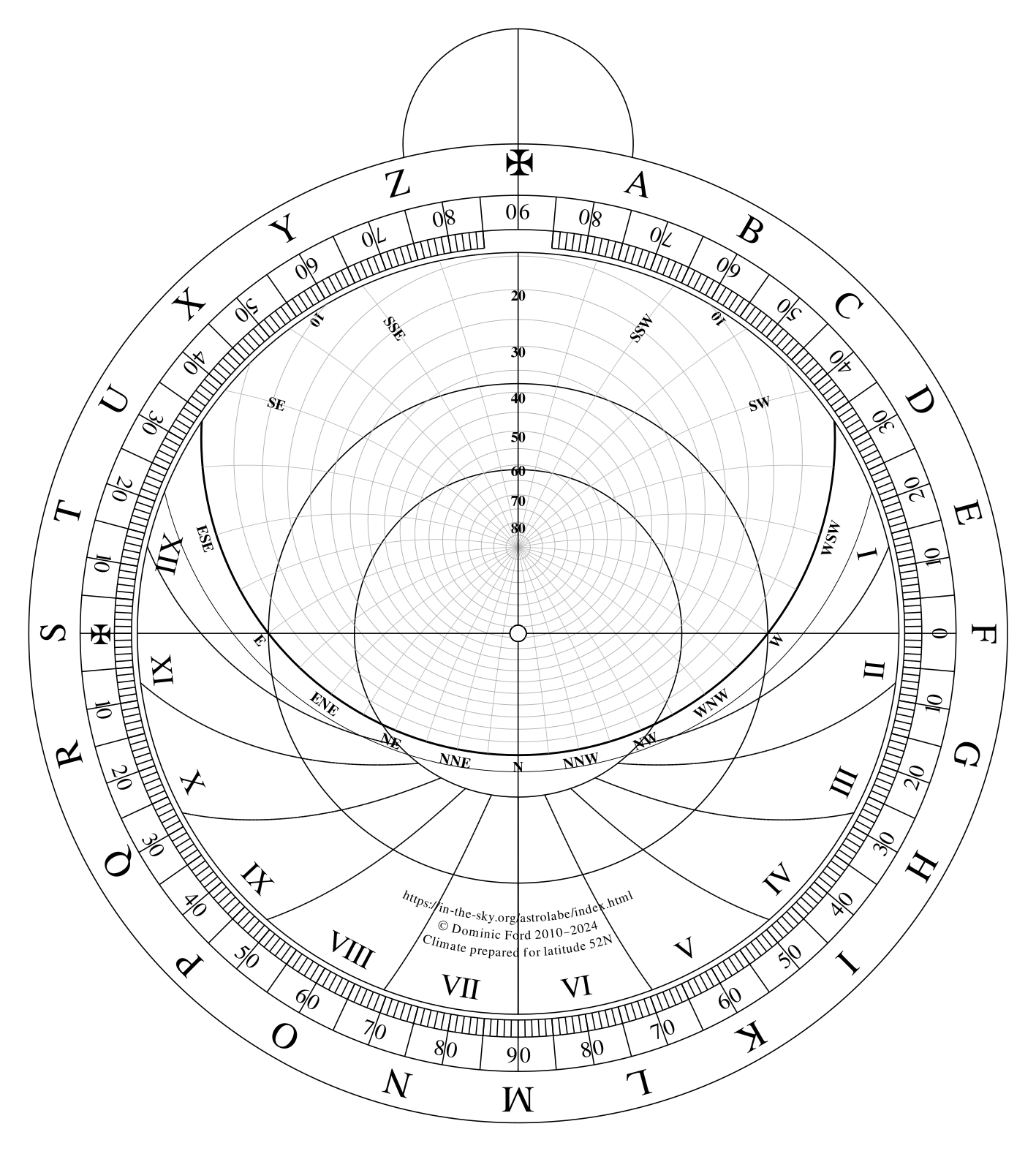Make your own Astrolabe
5. The Unequal Hours
In a 2018 web comic on the site XKCD, Randall Munroe responded to the beginning of daylight saving time by sarcastically proposed a time system in which the Sun would rise at 6am on every day of the year, and set at 6pm on every day of the year. The length of the second would change between day time and night time to ensure this remained the case throughout the year.
In fact, Randall Munroe's idea is not new, and would have seemed quite familiar in medieval times.
Before the advent of reliable mechanical clocks, each day was often divided not into twenty-four equal hours, but instead into twelve hours of day time and twelve hours of night time. On any given day, the twelve hours of day time would have a common length, and the twelve hours of night time would also have a common length. But the night hours might be longer or shorter than the day hours, depending on the time of year.
In winter, each hour of the night would be longer than each corresponding hour of day time. In summer, the converse would be true. These hours are hence known as unequal hours, because they change length through the year. This section describes how to use the astrolabe to tell the time in the system of unequal hours which would have been in widespread use in the Middle Ages.
Telling the time in unequal hours
The area of the climate beneath the horizon is divided into twelve curved strips, numbered 1–12 in Roman numerals. As the rete rotates, the circular path traversed by a star at any given radius from the centre can be divided into a portion which lies above the horizon, and a portion which lies beneath the horizon – assuming that the star is not circumpolar. The twelve curved strips are drawn so that they will always divide the portion of this circular path which lies beneath the horizon into twelve equal lengths.
To use these strips to tell the time, it is first necessary to determine the position of the Sun along the ecliptic – you can do this using the scale on the reverse of the mother, as described previously.
You should also find the position of the point diametrically opposite to the Sun along the ecliptic. This can be found by looking at the point directly opposite the current date on the reverse of the mother, representing the position of the Sun in six months' time. This will give you the point directly opposite to the Sun in the sky.
Turning the astrolabe over to the front, the rete should then be aligned to show the current configuration of the sky, perhaps using a measurement of the altitude of either the Sun or a known star. Depending on whether it is day or night, either the antisolar point or the Sun respectively will be beneath the horizon; at sunset or sunrise, both will be exactly on the horizon.
At night, the number of the strip in which the Sun lies is the hour of the night. The strips equally divide its path from the point where it sets on the western horizon to the point where it rises on the eastern horizon.
Conversely, in the daytime, the number of the strip containing the point opposite the Sun is the hour of the day. At sunset and sunrise, the point used to determine the hour of day / night changes, making the hours become suddenly longer or shorter as the transition is made from daytime to night time.
The calculation can also be done in reverse. To align the astrolabe to show what the sky would look like at any given hour of the day, the rete should be turned until the solar or antisolar point is in the correct place among the strips showing the unequal hours.
License
Like everything else on this website, these astrolabe kits are © Dominic Ford. However, they are provided for the benefit of amateur astronomers worldwide, and you are welcome to modify and/or redistribute any of the material on this website, under the following conditions: (1) Any item that has an associated copyright text must include that unmodified text in your redistributed version, (2) You must credit me, Dominic Ford, as the original author and copyright holder, (3) You may not derive any profit from your reproduction of material on this website, unless you are a registered charity whose express aim is the advancement of astronomical science, or you have the written permission of the author.
